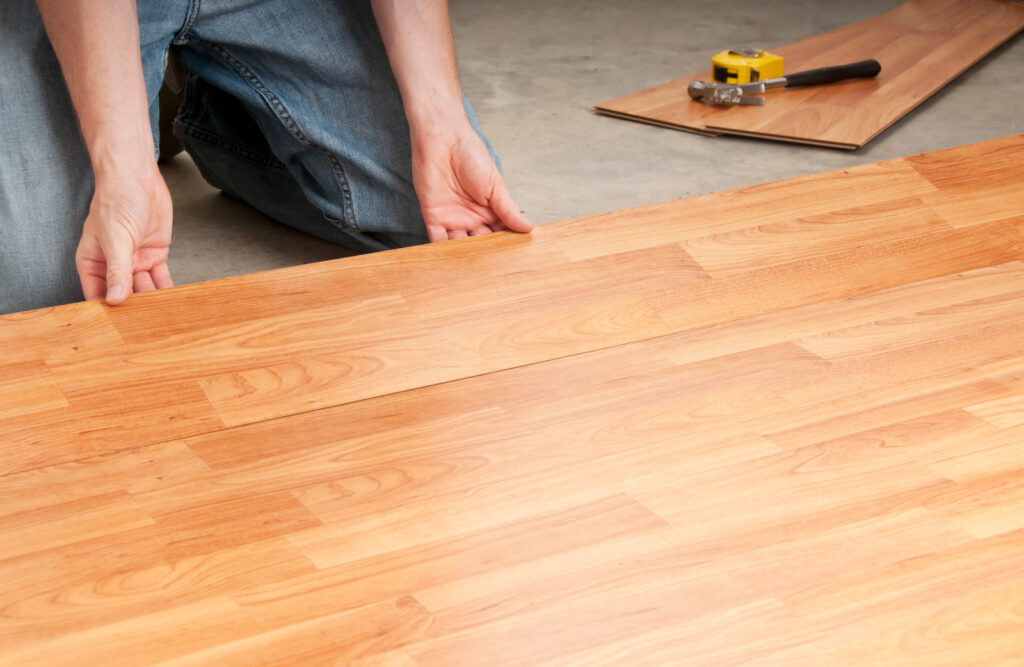Top 8 Considerations For Buying Hardwood Floors

Harvey Radanovic
Table of Contents
Homeowners face major challenges when making changes to their home and deciding on the flooring option is one of them. Suppliers have so many different flooring types on the market and the selection process could easily become overwhelming.
Hardwood flooring is a popular choice and if you decide it is the best option for your home then you’ve chosen a timeless look for your living space. With that said, there are still more decisions to be made. Suppliers have a multitude of hardwood types from which to choose and no two kinds of wood are the same.
1. Engineered Versus Solid Hardwood Flooring
The first consideration with choosing is the moisture level in the room. Where you install the hardwood affects how long it will last. Flooring in the kitchen or basement is more prone to moisture.
Engineered hardwood flooring is a better selection for rooms that are moist and have an increased risk of spills or water leaks. While you can get solid hardwood flooring that is pre-finished, the thickness of the flooring can affect how long-lasting it is in these spaces.
Solid Hardwood Flooring
Floors are created from a single piece of hardwood that includes strips or planks. Homeowners have three main selections with these floors, including strip, plank, and solid parquet. If strips are chosen, contractors will install the flooring with narrow strips that measure less than three inches in width, whereas planks will be installed wider than three inches.
The parquet solid hardwood is ideal for creating geometric patterns that add decorative elements to the living space. The homeowner can choose from different colors and stains to make the shapes stand out more. Parquet is more expensive than plank and strip, and strip flooring is classified as the cheapest among the solid hardwood flooring options.
Engineered Hardwood Flooring
This is a flooring option that features different layers and the only layer that is completely hardwood is the top layer since plywood is added to the bottom of the layer.
Since the top layer of the majority of engineered hardwood floors is thin, this limits the number of times you can pre-finish on it to between 2 to 3 times.

2. Prefinished Versus Unfinished Hardwood Floors
Getting pre-finished wood flooring is a major advantage for homeowners. The manufacturers sand, stain, and coat the wood before it is delivered to the customer. Upon arrival, the wood just requires professional installation.
The prefinished woods offer convenience for the property owners, and they can move all their belongings back into the living space immediately following the flooring installation. There aren’t any reasons to wait.
If the property owner installs unfinished wood, there is a longer timeline before you can use the living space because you have to wait for the contractor to sand, stain, and coat the flooring first before he can move on to the flooring installation.
The Difference Between Pre-finished and Unfinished Hardwood Floors
Prefinished hardwood floors go through a preservation process when they are created. The final step is a coating of polyurethane. Some manufacturers oven-bake the wood to cure the finish onto the wood for added protection.
The shortcoming of the treated wood is that the edges aren’t smooth and could create some difficulty when installing the floor, but there aren’t any lines or spaces between the boards. The finished product is smooth and flat.
The homeowner won’t experience the same hindrances in their home when choosing prefinished wood. There is no dust from sanding, and chemicals are not introduced into the space that could be harmful to the homeowner.
In comparison, unfinished hardwood looks more natural. The grains don’t look as natural after the coating process is completed for the prefinished selections. Flooring contractors can customize unfinished floors more effectively than prefinished ones.
When comparing the price, the unfinished wood is cheaper initially, but the homeowner must pay for the cost of sanding, staining, and coating the unfinished wood which increases the price considerably.

3. Grain Pattern
The homeowner must choose the preferred grain pattern, and there are three basic types – flat, straight, and curly. The patterns depend on the type of wood chosen and how the wood was cut by the supplier.
4. Plank Length, Width, and Thickness
Homeowners choose different lengths, thicknesses, and widths for their hardwood flooring. Contractors suggest wide planks since they are easier and faster to install than strips of wood.
When considering the thickness, the owner must start with the wear layer, the top layer that absorbs the foot traffic. The top layer of the floor defines how long it will last and if it manages foot traffic, spills, and objects falling onto the floor.
Flooring professionals recommend choosing a top layer that is thicker than the rest of the plank. This layer should measure more than 3/16 of an inch for the best protection. Thicker hardwood is more costly than other selections but the heightened longevity makes it worth the expense.
5. Reclaimed Solid Hardwood Flooring Versus New Wood
To acquire reclaimed wood, the flooring contractor visits recycling centers to get wood that was salvaged from older properties that were demolished. The unique aspect of the wood is that owners can get wood that was in intriguing old mansions and farmhouses by choosing recycled wood. The suppliers can provide details about the wood to the contractors, and homeowners can get wood from elegant old properties.
By choosing reclaimed wood over new wood, the property owner can do their part to decrease the depletion of trees and reuse wood to create timeless floors that have character. Some of the wood could come from historic buildings that were renovated and offer an interesting story. New wood is not eco-friendly and won’t have the same aesthetic benefits.
6. Hardwood Floor Finishes
As the owner chooses the right finishes, they must consider the cost, glossiness of the finish, and how durable the wood is afterwards. Contractors can offer recommendations for different wood types and give the homeowner the best overall look possible at a great price.
7. Natural or Stained Color
The wood types determine how the natural patterns and colors look in the living space. Homeowners can choose selections that range from light tans to extra dark mahogany. By keeping the floor natural, the homeowner can get extraordinary aesthetic benefits, and the floors won’t show scratches as easily. However, some owners will want to add a pop of color to their living spaces with stained colors.
8. Floating or Fixed Hardwood Floors
Fixed hardwood floors are nailed and glued to the subflooring. The floating method is installed without nails or glues, and it is best suited for laminate floors. Floating floors are an easy option for DIY homeowners, but fixed flooring should be left to professionals.
At Skilled Home Renovations Burnaby, we can help choose and install from a wide range of flooring options. As a specialized general contractor, we provide sound advice for all homeowners and present you with quality work. Homeowners can contact us today to learn more about our services.

